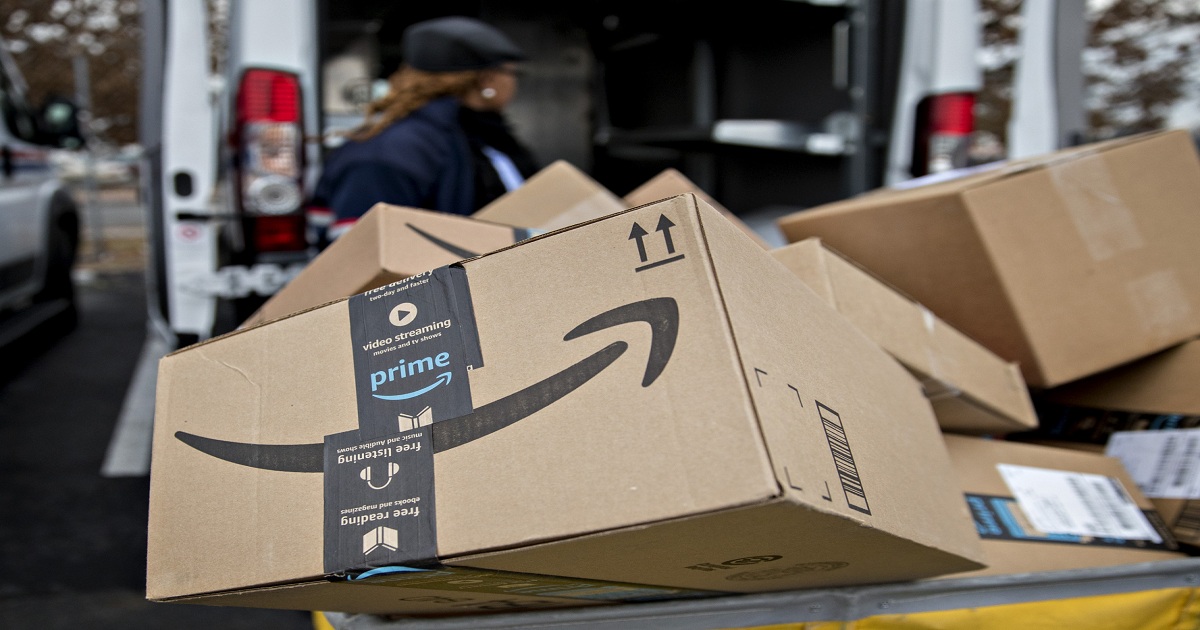
Software and Technology, Transportation
Article | December 7, 2022
The unsurprising investment eagerness of venture capital funds is manifesting in an automation tech glut in the distribution center space. Motivated by enabling trends like labor and land shortages, DCs are amid an automation transformation. Never has defining an automation strategy been more important.
There’s no shortage of VC cash available to logistics tech startups
With a brightly shining spotlight centered on supply chains for the past two years, it’s no surprise that total funding in logistics startups has seen a dramatic increase – growing at over 70% CAGR (Compound Annual Growth Rate). Logistics technology startups raked in over $25 billion in the first three quarters of 2021. That’s more than half of the total amount raised in the whole of 2020, and the incentives for continuing investment persist.
The rise of the of the “micro” DC
“Micro” is a relative term. The size of a micro fulfillment center (MFC) can range from 5,000 to 50,000 square feet. Those reduced square footages allow location in dense urban areas, typically within 40 miles of most of their intended customers. In addition, smaller footprints lead to reduced rents compared to a standard customer fulfillment center (CFC), and the proximity to consumers makes for lower final mile delivery costs. It’s no wonder that MFCs accounted for more than half of the logistics real estate leasing activity in the third quarter of 2021. The “urban logistics” trend is fueling demand for these highly automated, smaller locations.
Vertical logistics integration grows ever more fashionable among retailers
It’s a very “in” thing right now, these acquisitions and partnerships, and they won’t be going out of fashion soon. For example, American Eagle took in Airterra and its parcel optimization tech and third-party logistics (3PL) provider Quiet Logistics.
Target started early. They bought Grand Junction, a software platform that helps retailers determine the best delivery method and track carrier performance, in 2017. Their 2020 acquisition of Deliv brought with it same-day delivery routing technology that they’re now applying to their 2021 purchase, on-demand delivery service Shipt. Target uses Delivs’ tech to generate more efficient routes for Shipt.
Kroger has partnered with UK’s e-grocery specialist Ocado to build automated CFCs across the US and expand their retail footprint. The first CFC opened last spring in Ohio and their second in Florida later that year. They plan to open 20 CFCs over the next three years.
“The proliferation of DC automation solutions and modalities, the rise of MFCs in high-density urban areas, the increasingly automated vertical integration of logistics, and the need to rapidly expand order fulfillment capacity have all, in combination, advanced the need for and application of clearly defined strategies concerning the implementation of automation technology. Do not operate without one.”
Vikas Argod, Principal, Supply Chains Operations practice at Chainalytics
Coping with shortages in warehouse space and labor availability
Third quarter, 2021 US demand for industrial real estate exceeded supply by 41 million square feet. This pushed the national vacancy rate in the fourth quarter down to a record 3.7% in the Cushman & Wakefield US National Industrial MarketBeat report for Q4 2021. Who knows what the record might be when the Q1 2022 report breaks in a few weeks?
On the labor side, the December 2021 US unemployment rate was 3.9%, lower than in December 2019 (3.6%) yet reflecting a tighter labor market. Labor force participation rates are at 61.9%, nearly 2% below February 2020 levels, because of lingering effects of the COVID-19 pandemic. The rising wages and signing bonuses of the past year offer silent testimony to the ongoing constraints in today’s labor market.
Both trends will remain with us for the near- and mid-term, making an automation strategy a necessary part of your DC operations as you attempt to mitigate the effects of both. In addition, warehouse labor shortages are most pronounced in markets with high distribution center densities – Greater Memphis, In-land Empire, Allentown, PA, et al.)
Building the capability to rapidly open DCs at scale
No other factor drives home the need for a coherent DC automation strategy like this one. Let’s explore it with an example.
We’ll call this “A Tale of Two Companies.” One jumped on the automation bandwagon without hesitation – not a bad thing – but applied no strategic groundwork. The other is, well, Amazon.
Company one responded to increasing demand by creating DCs in their usual, strategically located fashion. However, with automation, the lack of a logical strategy led to adopting “the best that money could buy.” So, while these DCs work fine on their own (most of the time), each employs unique implementations from a variety of vendors, with little to no overlap of methods, capabilities, and management procedures between DCs. It’s functional, but a needlessly complicated hodgepodge.
On the other hand, it definitely looks like Amazon has a standardized automation strategy. One that can easily adapt to exploit the individual physical specifications of any space. This makes it simple to arrive and equip it with a standard package of automation solutions. That’s probably how Amazon blanketed the US with over 400 new DCs in just the last two years. They waste no time or money on repeating unnecessary decisions along the way.
Now, we all can’t have the resources of an Amazon. However, the rise of on-demand warehousing companies like Stord and Flexe allow organizations to dramatically decrease the cycle time of standing up additional fulfillment capability.
Developing an automation strategy will feel familiar. It begins with benchmarking, order profiling, current performance drivers, EBIT targets, and theoretical evaluations of newer technology options. All this leads to the creation of a decision framework for DC automation. The goal here is achieving alignment among the leadership on critical capabilities to focus on. These include rapid fulfillment, labor shortage, capacity constraints, safety challenges, or sustainability. Those that commit to this process will start slowly but finish with a strategy that will underpin thousands of decisions and enable sustained rapid growth.
If, in the end, you decide that automation is not right for your operation, that’s a perfectly valid strategy as well. So long as you have a method to evaluate all of your options, and you base your decision on cost-service-sustainability trade-offs, the right strategy for your organization may be no automation at all.
There’s no point in chasing shiny robotic objects if automation makes little sense.
The rise of automation and the multitude of technologies to choose from require the development of a strategic decision framework. Contact us and see how Chainalytics – an NTT DATA company – can be your guide in developing this critical part of your foundation for growth. Our top supply chain talent, enabled by proven, leading-edge digital assets – tools, methods, and content – deliver actionable insights and measurable outcomes to some of today’s largest and most complex supply chains.
Read More

Transportation
Article | April 26, 2023
The rapid growth of e-commerce continues to create new challenges for retailers as they plan distribution strategies. One of those challenges is managing the high volume of returns. One in three shoppers returns items, and more than half read a company’s returns policy before making a purchase. Retailers lose $50 billion annually due to inefficiencies in processing returns, and distribution centers handling returns need 15% to 20% more space than a traditional facility.
Read More

Supply Chain
Article | May 22, 2023
Improve supply chain operations with innovative inventory management best practices. Uncover the techniques for achieving exceptional supply chain performance in the B2B competitive marketplace.
Effective inventory management is critical for businesses seeking to optimize their supply chain operations and improve their warehousing & supply chain distribution efficiency. By employing demand optimization techniques, inventory management aims to strike the right balance between meeting current and anticipated future demand while minimizing unnecessary inventory costs. Organizations that maintain optimal inventory levels can mitigate challenges associated with inventory, such as overstocking and stockouts.
In supply chain management, inventory optimization is vital, as it directly impacts organization’s ability to thrive. For any enterprise selling products, the effective management of goods is essential. Without adequate stock levels for sales or fulfilling customer orders, revenue generation and overall income can be severely hindered. Inefficient inventory management, leading to stock shortages, can create stumbling blocks for businesses. Conversely, improper stock tracking resulting in excess inventory can strain financial resources. As these issues compound, it further contributes to inventory imbalances, eventually leading to bottom-line losses from expired or redundant stock.
According to a recent Statista survey, 40% of the supply chain industry has already adopted advanced technologies to optimize its inventory and using networking tools.
The above data signifies the importance of optimizing and managing inventory for improved supply chain performance. Inventory analytics, typically overseen by an inventory manager, offer valuable insights that aid in understanding and enhancing inventory performance. Inventory management best practices help achieve effective inventory optimization, crucial data points encompassing products, suppliers, procurement, purchases, and sales that are meticulously tracked within the inventory management system. These data, in turn, serve as the foundation for formulating inventory metrics aimed at demand optimization.
This article explains the techniques to optimize and manage inventory with the inventory management best practices that helps overcoming challenges, addressing procedural considerations, and highlighting the significance of implementing these methods. Additionally, it explores the benefits of adopting solution for improved supply chain distribution network.
1. Implementing Standard Inventory Review Systems
To enhance supply chain operations, adopting standard inventory review system is essential, which can significantly contribute to inventory optimization efforts. Two effective methods to review systems include the continuous review system and periodic review system. In the continuous review system, fixed quantities of items are ordered in each cycle, providing a steady and consistent approach to inventory management.
On the other hand, the periodic review system involves collecting products at predetermined intervals, considering the inventory levels at that specific moment. Embracing these standardized review systems empowers businesses to streamline inventory processes, maintain optimal stock levels, and improve overall supply chain efficiency.
2. Streamline Stocktake
Supply chain operations can be improved by streamlining the stocktaking process, which involves meticulously counting and managing inventory. A well-structured stocktake procedure ensures accuracy and prevents losses by keeping staff engaged and focused.
To achieve accuracy and earn profits, businesses must:
Schedule stocktakes strategically to minimize disruption in regular business operations.
Prioritize cleaning and organizing the stockroom before the stocktake to facilitate efficient counting.
Clearly define the item count and the counting methods to eliminate guesswork.
Conduct comprehensive stock counts, leaving no room for assumptions.
By implementing these measures, businesses can optimize inventory management, identify discrepancies promptly, and maintain precise stock records. The streamlined stocktake process contributes to smoother supply chain operations, reduces inventory-related errors, and enhances overall productivity and profitability.
3. Utilize Cloud-Based Inventory Management System
Transitioning from Excel inventory management to a cloud-based inventory management system is critical to enhancing supply chain operations. It is considered one of the most used inventory control best practices. Unlike locally-installed applications, cloud-based software offers numerous advantages, enabling businesses to pay for essential features and effortlessly upgrade as needs evolve. Companies can efficiently manage costs with a predictable subscription fee tailored to feature requirements and team size. Seamless upgrades become hassle-free as business growth justifies a move to a more robust platform, ensuring scalability.
Additionally, cloud technology provides continuous support, ensuring smooth operations and quick issue resolution. With a dedicated support team on standby, businesses can focus on optimizing inventory management, managing warehouse automation, and driving overall productivity. Embracing cloud-based inventory management is a business-changing decision that unlocks increased agility, accessibility, and cost-effectiveness for long-term success.
4. Implement Adequate Quality Control Practices
Enhancing supply chain operations requires the implementation of robust quality control practices. Accurate quality control processes play a pivotal role in maintaining inventory quality, directly impacting customer satisfaction and business growth.
Effective steps include developing comprehensive checklists, outlining stock-taking procedures, followed by standard operating procedures to qualify or disqualify products with effective warehouse management systems. By adhering to these protocols, businesses can prevent issues of overstocking or understocking, ensuring customers receive only appropriate merchandise.
Companies can strengthen their reputation, increase operational efficiency, and cultivate lasting customer loyalty through this inventory optimization best practice. The seamless integration of quality control practices into the supply chain fosters a thriving business environment built on excellence and customer-centricity.
5. Preparing Well Planned Inventory Budget
A well-structured inventory budget is one of the industry-used inventory management best practices to enhance logistics distribution and supply chain processes. Managers commonly utilize an annual inventory budget, meticulously prepared before procuring inventory. The budget is designed to encompass the total cost of ownership for the upcoming accounting period, encompassing materials cost, fixed operational expenses, transportation and logistics charges, redistribution costs, and other miscellaneous expenses impacting the inventory's total cost of ownership. By crafting a comprehensive inventory budget, businesses gain financial clarity, optimize resource allocation, and ensure efficient inventory management throughout the year. A well-planned budget empowers informed decision-making, minimizing financial risks and driving overall supply chain success.
6. Carrying Safety Stock Inventory
Operations in the supply chain require safety stock inventory – a strategically maintained surplus of inventory to protect against market demand and lead time fluctuations. By implementing safety stock, businesses can avoid revenue loss, customer attrition, and declining market share that may arise in its absence.
Safety stock is vital with the advantages it offers:
Protection against sudden surges in demand.
Prevention of stockouts, ensuring uninterrupted customer service.
Compensation for inaccuracies in market forecasts.
A buffer for longer-than-expected lead times, averting production delays.
Incorporating safety stock as a fundamental inventory management best practice empowers companies to achieve operational supply chain resilience, optimize customer satisfaction, and maintain a competitive edge in the dynamic market landscape.
7. Optimize Inventory Turnover Rates
Optimizing inventory turnover rates is a critical metric that frequently measures inventory sold or used within a specific timeframe, typically a year. Calculating turnover rates provides valuable insights into market demand, identifies obsolete stock, and guides inventory management decisions.
Inventory turnover can be improved through various strategies, such as experimenting with pricing to attract more customers and boost sales, liquidating obsolete stock to free up capital and storage space, forecasting customer demand accurately to maintain optimal inventory levels, and redistributing inventory among warehouses for better stock availability. By optimizing inventory turnover rates, businesses can reduce carrying costs, minimize stock obsolescence, and enhance overall supply chain efficiency, as well as gaining competitive advantage in the market.
“It’s been my observation that the business world has a weak understanding of inventory management and control. They are trained shallowly, and sometimes they apply only shallow experience to their practices. Sometimes, that works out great. In my 30 years of experience, however, I have seen that a lot of money can be saved by training and managing inventory control in-depth.”
-Inventory Control Expert Dr. Pyke
Final Thoughts
Adopting advanced inventory management best practices is crucial for supply chain optimization in the competitive B2B environment. Standardized inventory review systems and streamlined stocktakes optimize control and accuracy, minimizing disruptions. Cloud-based inventory management offers scalability and continuous support, facilitating data-driven decisions. Adequate quality control ensures inventory quality, driving customer loyalty. Well-planned budgets lead to financial clarity and precise resource allocation. Safety stock inventory and optimized turnover rates fortify businesses against uncertainties, boosting efficiency and profitability. By embracing these practices, logistics professionals can enhance supply chain potential, achieve lasting success, and gain a competitive advantage in the market. With a data-focused approach, these strategies pave the way for streamlined operations, stronger customer relationships, and sustained growth.
Read More

Warehousing and Distribution
Article | July 11, 2023
Transform the supply chain with cutting-edge warehouse automation tools. Enhance productivity, minimize costs, and deliver exceptional customer experiences to stay ahead in the competitive market.
In the rapidly evolving world of manufacturing, logistics, and supply chain management, adopting automation has become imperative for businesses aiming to maintain a competitive edge. By minimizing costs, enhancing efficiency, and reducing downtime, automation delivers optimal value for manufacturers. However, selecting the right partner can be challenging with numerous warehouse automation companies available. This article explains the features and benefits of top ten warehouse automation tools that offer expertise in improving business operations. These data warehouse tools provide comprehensive solutions to meet diverse needs of the logistics and warehousing companies and improve the supply chain performance.
1. 3PL WMS Software Solution
3PL WMS Software Solution is one of the leading warehouse automation tools for supply chain operations. This software has comprehensive features that automate and streamline warehouse processes, offering unprecedented efficiency. The tool seamlessly integrates with existing systems and provides total transparency and control. 3PL warehouse automation software boosts order throughput, reduces pick time, and automates billing effortlessly. Gain unprecedented insights through accurate, real-time reporting, ensuring inventory accuracy and reducing lost-inventory costs. This warehouse automation tool, designed as the warehouse management backbone, revolutionizes operations, enhances customer satisfaction, and drives exponential growth.
2. Datex 3PL WMS
Datex 3PL WMS offers the most innovative warehouse management tools that help implement warehouse automation in the supply chain process for transportation services. This software empowers transportation and logistics services, revolutionizing material handling, storage, trans-loading, cross-docking, and more. It supports diverse industries such as refineries, steel mills, and energy distribution facilities. Its flexibility makes it an optimal solution to handle any inventory type, including bulk materials, steel products, liquids, and hazardous materials. This automated warehouse software also enables multi-warehouse operations and accommodates various modes of transportation. Additionally, Datex 3PL WMS boasts a highly flexible billing system, allowing individualized billing strategies and capturing value-added services. Industry experts benefit from streamlined processes, improved efficiency, and accurate billing, ultimately enhancing their supply chain business and warehouse operations.
3. Deposco
Deposco Bright Warehouse is a game-changing warehouse management software solution that offers advanced features and capabilities to businesses of all sizes. This data warehouse tool empowers companies to pick, pack, and ship orders efficiently, optimizing processes to further improve order fulfillment while reducing operational costs. It provides strategic order allocation, workgroup segmentation, and optimized picking strategies, to achieve accurate and speedy order fulfillment. The software offers network-wide inventory visibility through advanced tracking, barcoding, and management capabilities. This solution automates shipping processes by seamlessly integrating with carriers, ensuring maximum accuracy and speed. Leveraging its material handling technology for automation can lead to significant productivity improvements. Businesses can enhance their capabilities by accessing a unified view of operations, utilizing customization options, and benefiting from direct API integration with shipping carriers.
4. Softeon
Softeon is a powerful warehouse management tools for supply chain automation. Its comprehensive WMS optimizes distribution operations, handling all essential tasks while offering unique functionality for a competitive edge. With a proven deployment success rate and flexible delivery options in the cloud or on-premise, Softeon empowers businesses to streamline inventory management and delivery processes. By integrating with their Warehouse Execution System (WES), warehouse and distribution companies can further enhance order fulfillment orchestration and optimization. Industry leaders like UPS Supply Chain Solutions and Sears Home Services rely on this warehouse automation software.
5. Logiwa WMS
Logiwa WMS offers a cloud fulfillment platform that combines WMS software and order fulfillment capabilities, enabling companies to operate a digital fulfillment network and expand their direct-to-consumer operations without the need for additional staff. The data warehouse management tool offers comprehensive warehouse and inventory management functionality, billing, and seamless integrations with over 200 ecommerce, accounting, and shipping solutions; it empowers 3PL providers to optimize order fulfillment, enhance speed and accuracy, and drive customer satisfaction.
6. SnapFulfill
SnapFulfill is one of the leading warehouse management technologies that empower companies across various industries, including B2C and B2B retail, third-party logistics, manufacturing, food and beverage, and electronics, to optimize their inventory, space, and resources. With SnapFulfill's class-leading warehouse management solutions, businesses can streamline operations and enhance efficiency. The software offers flexible deployment options and payment methods for diverse warehousing challenges. By utilizing SnapFulfill, industry experts gain access to advanced data warehouse tools that enable them to improve their supply chain business, enhance warehouse and distribution processes, and achieve optimal inventory management for increased productivity and profitability.
7. Indigo Software
Indigo WMS is an award-winning warehouse management system tool designed to enhance supply chain operations. It offers real-time control, visibility, and functionality for all warehouse processes. It is one of the best supply chain tools to track inventory in real-time, enabling efficient cycle counting, forward pick replenishment, and improved inventory forecasting. With Indigo WMS warehouse automation software, these tasks are automated, and the software ensures greater picking accuracy, reduces returns, and enables on-time and complete deliveries. It seamlessly integrates with existing systems, whether from SAP, Microsoft, Oracle, Infor, Sage, or other ERP, TMS, or SCP vendors, providing live and up-to-date data visibility across the entire supply chain process.
8. OrderWise
OrderWise is an order management system that empowers businesses in the consumer goods and retail sector to accelerate operations and deliver exceptional customer service. With its integrated features, OrderWise ensures seamless order processing and maximizes sales opportunities. By tracking orders from various sales channels, managing tight schedules, and making real-time adjustments, businesses can meet customer demands promptly. This is one of those supply chain management tools that provides valuable insights into customer purchase history and stock availability, enabling personalized recommendations and enhancing sales effectiveness. Whether for ecommerce, retail, or B2B sales, OrderWise streamlines order operations, making them smoother, faster, and more accurate.
9. Balloon One
Balloon One provides supply chain management tools, offering tailored software solutions to distribution, manufacturing, and e-commerce businesses. Its expertise lies in streamlining processes, optimizing resource allocation, and enhancing operational efficiency. With a focus on minimal disruption, Balloon One seamlessly implements software solutions, ensuring uninterrupted business operations. As an impartial advisor, the software offers both SAP Business One and NetSuite, thus allowing to recommend the ideal ERP system for each company's unique requirements. In addition, this software provides wholesale and distribution businesses with the robust HighJump WMS, a real-time warehouse management system that delivers scalability and flexibility.
10. Foxfire
Foxfire offers supply chain management tools specializing in Warehouse Management Systems (WMS). It offers WMS solutions, including features to optimize inventory, increase labor productivity, and enhance customer satisfaction. With over 20 years of industry experience, Foxfire has a proven track record of delivering measurable results to customers worldwide. This tool provides a comprehensive approach, including needs assessment, best practice recommendations, training, and ongoing support. Additionally, it is cost-effective by delivering low lifetime costs.
Conclusion
The warehouse automation market is experiencing significant growth, with a wide array of exceptional warehouse automation tools that offer high-quality solutions. Regardless of any special requirements, exploring the features of each warehouse automation tools is vital to identify the ideal fit for any business. Choosing the correct solution from the data warehouse tools list will help to improve inventory management and distribution efficiency through warehouse automation. Embrace the opportunity to streamline processes by leveraging supply chain management tools and warehouse automation solutions and experience the transformative power of automation to unlock the full potential of your business.
Read More